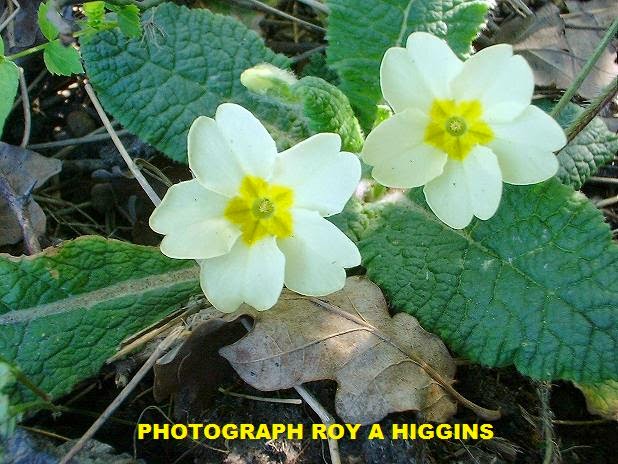
Catkins appear on willow trees in April, we used to call them pussy willow when we were kids. I'm not quite sure why. probably because the the name is derived from the obsolete Dutch word, katteken, meaning kitten. The seed heads look nice photographed against a blue sky, don't you agree, but I have two large willow trees growing behind my house and they are the bane of my life. Soon the catkins will begin to fall, and they always seem to fall in my garden, bucket loads of them. On windy days the seeds blow around like snow and it's impossible to sit out in the sunshine for two whole weeks of the year. To make matters worse seedlings grow everywhere. I'm still digging out last years and soon the new ones will seed. I wish someone would cut them down and turn them into cricket bats.
Hazel catkins are also abundant in the hedgerows during April, as children we called these lambs tails, for obvious reasons. Have you ever watched a lamb when it's feeding? It wiggles it's tail happily, and when the wind blows the hazel catkins wiggle like the tails of lambs.

These animals are young bullocks awaiting slaughter. If you've ever walked a dog through a field of bullocks you'll know just how curious they are. They will follow, and if you stop they will stop, keeping a safe distance. If you walk towards them they will back up, but when you continue on your way they will follow for as long as the field boundaries will allow. This group were so curious that they broke down the fence while trying to check me out.
 The woodland floor is carpeted with celandine at this time of year, taking advantage of the available light before the woodland canopy casts them into relative darkness. Even though the leaves are not yet on the trees I had to use a flash to take this picture. I bet some of you think I know what I'm talking about, come on admit it, but I've bought an idiots guide to spotting wild flowers with which to identify them.
The woodland floor is carpeted with celandine at this time of year, taking advantage of the available light before the woodland canopy casts them into relative darkness. Even though the leaves are not yet on the trees I had to use a flash to take this picture. I bet some of you think I know what I'm talking about, come on admit it, but I've bought an idiots guide to spotting wild flowers with which to identify them.
Easter has already passed us by, but then all photographs are retrospective. I was intrigued by this symbol of Easter purposely erected on the top of a small hill to represent Calvary. It appears even more poignant because of the gorse, with its thorny crown, growing around the base of the cross. I wonder if the architect of this scene felt the same way, or if it was just a happy accident.

I've reached a signpost pointing the way back home. You can just see Whalley Nab in the distance, with the television and radio booster mast sitting on top. It's time that Pendle Forest transmitter and the Whalley Nab booster were updated, as reception is chronic around Whalley, and very few freeview channels are currently available. I bought a DAB radio a couple of years ago but it will only play on FM. What's the point of that?
On our first internet walk 200 people turned up, 84 from Russia, 49 from the UK, 41 from the USA, 22 from France, and 1 from Bulgaria, Spain, Hong Kong, and the Ukraine. If you enjoyed this walk through the Ribble Valley please share this post with your friends on Facebook and Twitter, and let's see if we can attract an even bigger crowd this time.
Some wild flowers photographed during April.
 |
| Gorse |
 |
| Forget-me-not |
 |
| Common daisy |
 |
| Dandelion |
 |
| Wood Anemone |








.jpg)